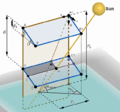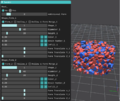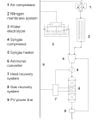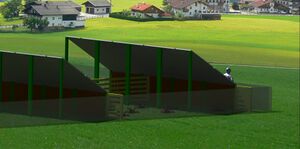
Land-use conflicts created by the growth of solar photovoltaics (PV) can be mitigated by applying the concept of agrivoltaics, that is, the co-development of land for both PV and agricultural purposes, to commercial-scale solar installations. In this study, we present a conceptual design for a novel agrivoltaic system based on pasture-fed rabbit farming and provide the technical, environmental and economic analyses to demonstrate the viability of the concept. Included in our analysis are the economic advantages to the PV operator of grazing rabbits at a density sufficient to control vegetative growth, thus reducing the economic and environmental costs of mowing; the dual-revenue stream from the sale of both rabbits and electricity, contrasted with estimates of the capital-investment costs for rabbits co-located with, and also independent of, PV; and the economic value to the rabbit farmer of higher colony-growth rates (made possible by the shading and predator protection provided by the PV arrays and of reduced fencing costs, which are the largest capital cost, by being able to leverage the PV systems for rabbit fencing. We also provide an environmental analysis that suggests that rabbit-PV farming is a pathway to a measurable reduction in agriculturally-generated greenhouse-gas emissions. Our calculations indicate that the co-location of solar and rabbit farms is a viable form of agrivoltaics, increasing overall site revenue by 2.5%-24.0% above projected electricity revenue depending on location and rental/ownership of rabbits, while providing a high-value agricultural product that, on a per weight basis, has significantly less environmental impact than cattle.
Highlights[edit | edit source]
- Agrivoltaics avoids land-use conflicts between photovoltaics (PV) and agriculture.
- Developed novel pasture-fed rabbit farming for agrivoltaics.
- Rabbits cut O&M costs by grazing.
- Location dependent rabbits increase revenue 2.5-24% from ownership/land rental fees.
External resources for agrivoltaics[edit | edit source]
See also[edit | edit source]
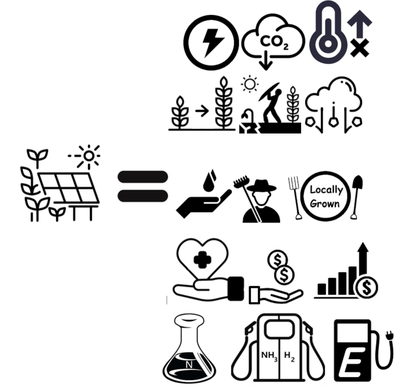
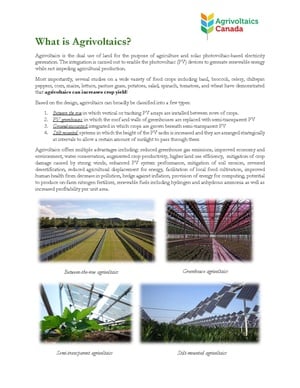
- Coal with Carbon Capture and Sequestration is not as Land Use Efficient as Solar Photovoltaic Technology for Climate Neutral Electricity Production
- Dual use of land for PV farms and agriculture literature review
- sheep
- Israeli white plastic reflectors
- A Farmer's Guide to Going Solar (NREL)
- German guidelines: https://www.ise.fraunhofer.de/content/dam/ise/en/documents/publications/studies/APV-Guideline.pdf
- 2021 review
- Miskin, C.K., Li, Y., Perna, A., Ellis, R.G., Grubbs, E.K., Bermel, P. and Agrawal, R., 2019. Sustainable co-production of food and solar power to relax land-use constraints. Nature Sustainability, 2(10), pp.972-980.
- Retrofitting solar parks for agrivoltaics
- Shading PV
- Alexis' talk at American Solar Grazing Association2021
In the News[edit source]
- Agrivoltaics: solar energy + better crops Climate and Nature
- Why solar power and farmers’ fields could be the perfect combination TVO
- Solar farms and sheep show the makings of a clean energy classic duo Business Renewables
- Agrivoltaics charge up St. Albert-area farms St Albert Gazette
- Sheep, solar and crops. How some Alberta farms are creating ideal growing conditions Western Wheel
- Sheep, solar and crops. How some Alberta farms create ideal growing conditions Voxpopuli
- 3D printed clamps for front-surface PV mounting on wood racking PV Magazine
- Harvesting the Sun to Grow in the Shade Garden Culture Magazine
- What crops fit with vertical agrivoltaics? PV Magazine
- Agrivoltaics – Keeping the farm in the solar farm Green Energy Futures























